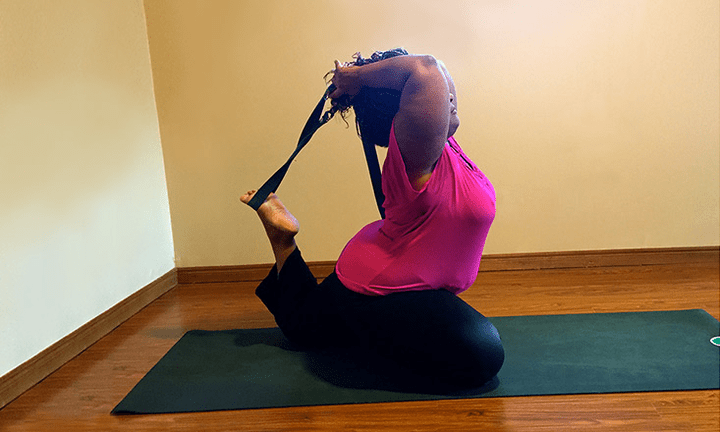On the path to accessible and uncomplicated yoga for all, there are some underutilized and unsung heroes… Props.
Props are the key to making your teaching more available to a greater number of students.
Let’s take a look at how we can use yoga props as a gateway to a successful asana experience for you and your students.
Giving Props
I love props. I find that props are especially useful for those students that are more abundant, older, less flexible, or different able bodied. Props can make the difference between having a positive experience in a yoga class or a frustrating one. As teachers and students, we need to reframe the way we look at props and how we use them in our classes.
We start by looking at props as enhancement and not as a crutch within the asana practice. ~Dianne Bondy
Prop it up with challenging poses like Pigeon or Triangle, and make them more therapeutic by creating greater body awareness and alignment. The more advanced practitioner can use props as a tool for resistance to create greater sensation in her body within the asana.
Three Ways to Get Your Students Using Props
1. Make props more universally accepted in your classes by normalizing them.
At the beginning of class, ask everyone to grab props. Teach a variation of a pose with a prop and then without. Ask your students to play and be creative so that they discover which version of the asana they like the best.
2. Give your students agency to use props for their own specific needs.
Encourage students to try using and adjusting different heights of blocks or using different objects as props within the poses. Let them experiment and find which way is comfortable for them, and be there to assist if they have questions or are experiencing difficulty.
3. Educate, innovate, and inform your teaching arsenal with the use of props.
Check out different classes like yin, restorative, or chair yoga to get new ideas for how you can serve your students better through the use of props. Be bold, be creative, and have some fun.
Exploring different ideas and tools can also help you when you are teaching in a space with no props. Do some creative problem solving to fit the needs of the moment. Remember to ask yourself: What is around me that I can use as props to help benefit my students? How can I make this class accessible with what I have right here, right now?
Bolster Your Teaching Skills
Most of us with yoga experience have a basic understanding of how to use props. I encourage you to expand your knowledge and be more creative and inventive.
Get on the mat and play the props game. Try different angles and ways to use props. Remember, there is not a right or wrong way to use props to enhance your experience of asana; Just make sure your prop is stable and secure within the pose.
Unlikely props are all around you. Water bottles, cups, dog leashes, books, shoes, tee shirts, towels, sofa cushions, and even socks can be used as props.
I once had a yoga teacher use a knee-high sock get into King Pigeon Pose. She put the sock on and pulled it up toward her ankle keeping lots of room at the toes. She grabbed the top of the sock when she couldn’t reach her toes in the pose! Brilliant!
As a yoga teacher, you have been gifted with students and with the opportunity to share a life-changing moment. Your influence and awareness reaches further then you could ever realize. Why not make your classes inviting to everyone who needs this practice?
Using props creatively and effectively is just one more way to broaden the path to yoga.


